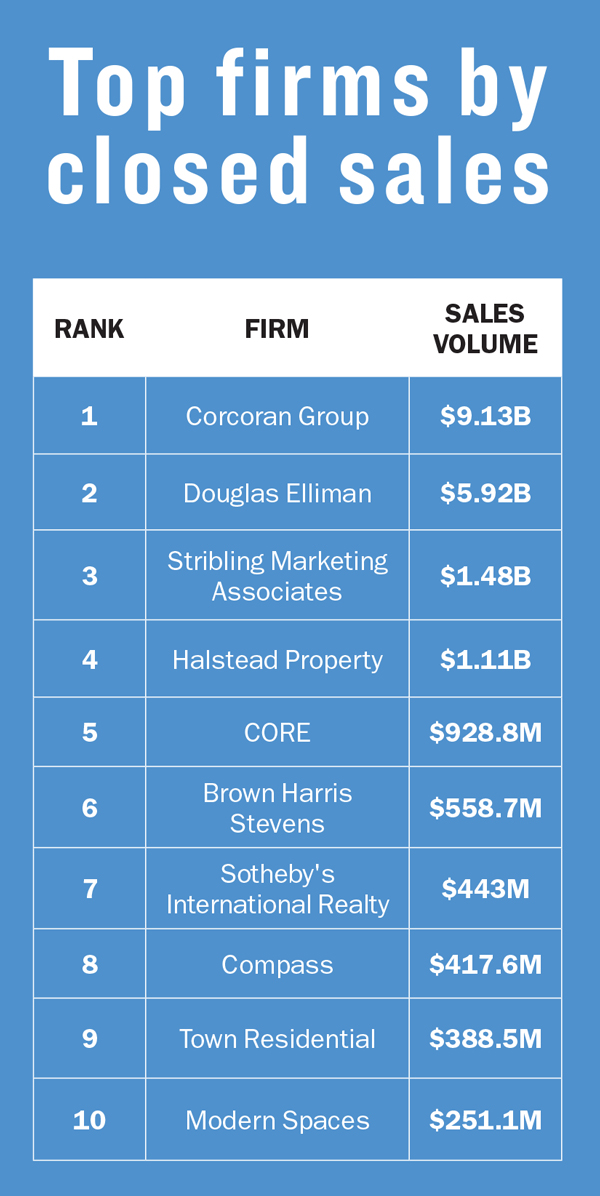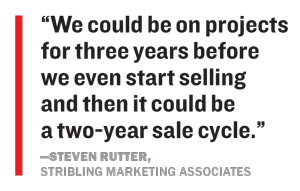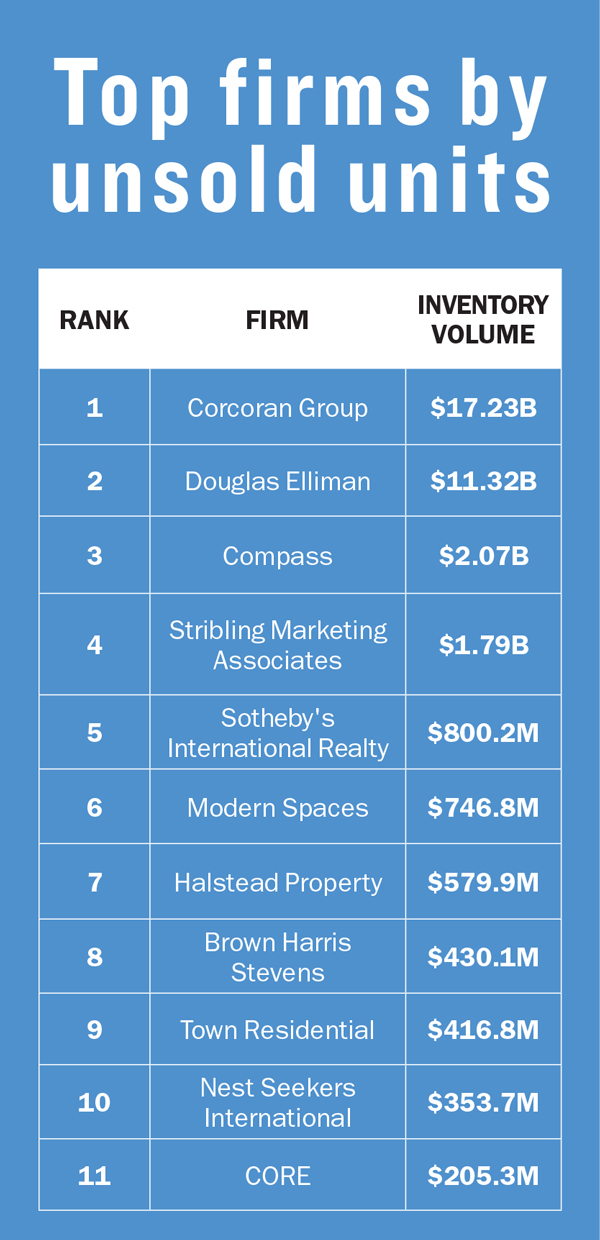UPDATED, Aug. 4, 1:20 p.m.: On a Friday morning in the middle of last month, news broke that the residential brokerage Compass had replaced Sotheby’s International Realty as the marketing firm at Siras Oriel Development’s Soori High Line — a 31-unit Chelsea condo development that launched sales in 2014.
The announcement looked like a big win for the brokerage’s three-year-old new-development division. Compass, the venture capital-backed startup founded by Ori Allon and Robert Reffkin in 2010, has brought on big names such as Leonard Steinberg, Toni Haber and Billy Goldstein in recent years and has closed $417.6 million in New York City new-development condo deals since June 2014. But so far, the young brokerage only has a handful of exclusive new-development assignments to show for it.
Landing the Soori High Line just four months after the firm took over sales at Tessler Development’s 172 Madison Avenue seemed to add to its momentum. But the publicity boost was short-lived. Later that morning, The Real Deal reported that developer Ben Shaoul had booted Compass off his 196 Orchard Street project, replacing it with industry behemoth Douglas Elliman.
Related: Solving NYC’s condo riddle
“There’s nothing wrong with mixing it up,” Shaoul said at the time. “Since I bought the building to today, the neighborhood has changed so much. You want a fresh set of eyes on your product when so much is happening all around you.”
Such is the current state of new development marketing, which can be brutally cutthroat. And as luxury sales slow in New York and developers grow increasingly anxious about selling out their condo projects, competition between brokerages — which already seemed to be at an all-time high — has become even fiercer.

Source: TRD analysis of sponsored sales in new development buildings that closed between June 1, 2014 and May 31, 2017 in Brooklyn, Queens and Manhattan. Only buildings with a price-on-acceptance of $20 million or MORE were considered. To qualify as a new development, the offering plan on the building must have been effective AS of Jan. 1, 2010. Any buildings that were effective before that date were not considered, unless a later amendment showed a new sponsor and sales offerings of at least $20 million. No re-sales were considered: Brokerages must have demonstrated that they were the sponsored agent on the building for their sales to count. TRD analyzed deeds recorded in ACRIS, listing credits in StreetEasy and OLR, and documentation from firms to assign credit.
“In my 15-plus years in the business, I’ve never witnessed so much switching and swapping of teams on different projects,” said Kelly Kennedy Mack, president of Corcoran Sunshine Marketing Group, the new-development arm of the Corcoran Group. “Frankly, I think the whole thing is kind of ridiculous and definitely not in the best interest of the projects long-term.”
For all the uncertainty in the market, TRD’s latest ranking of new-development firms, in many ways, reflects our previous rankings — though this time around we’ve included projects in Brooklyn and Queens, where new condos have sprouted like weeds in the last five years.
The two-in-one ranking — which we divided up into closed units and “unsold” units — was designed to provide a window into which firms have already notched the most business and which ones have the most potential business coming down the pike.
The top firms on the ranking closed a combined $20.62 billion in new development condos in the last three years. And despite New York’s softening new development market, the brokerages that made the cut on our pipeline ranking, which includes all active listings, in-contract deals and so-called shadow inventory — units that have been assigned to firms but have not yet hit the market — have a combined $35.94 billion worth of condos to sell.
But closing deals in this market is not likely to be easy.
Gary Malin, president of Citi Habitats — which has the same parent company as Corcoran and did not make the ranking — said buyers “are more willing to take a wait-and-see approach” considering the surge in new supply.
Due to the “much more challenging market,” brokerages are locked in severe competition to sell condos in new and often uncompleted buildings, Compass’ Steinberg noted.
Susan de França, who heads Douglas Elliman Development Marketing, said, “the competition between new-development marketing firms has always been strong in New York, but when the market changes it does tend to narrow the field.”
Pecking order
Once again, Corcoran took the top spot on TRD’s ranking by closed sales.
The firm — which has long been the most dominating force on New York’s new-development brokerage scene — closed $9.13 billion in new-condo deals during the three-year stretch between June 1, 2014 and May 30, 2017. Those deals were sealed at megaprojects including the 145-unit 56 Leonard, where a penthouse recently sold for $48 million, and the 123-unit Halcyon. Arguably its biggest assignment is Vornado Realty Trust’s 220 Central Park South, which has a projected sellout of $3.1 billion and reportedly includes a $250 million penthouse.
Clocking in at No. 2 was Elliman with $5.92 billion in closed sales during that same time. Its most high-profile assignment was CIM Group and Harry Macklowe’s 432 Park Avenue.
Elliman was followed by Stribling Marketing Associates at No. 3 (with $1.48 billion), Halstead at No. 4 (with $1.11 billion) and CORE at No. 5 (with $928.8 million). There is a clear divide between the haves and have-nots: Corcoran and Elliman accounted for a staggering 73 percent of the top 10’s combined sales over the period.
The divide is even more stark when looking at unsold inventory, where the two firms snagged 80 percent of the total.
As of June 29, they respectively had $17.23 billion and $11.32 billion in unsold units.
In a telling sign, Compass took the No. 3 spot for unsold inventory with $2.07 billion worth of units, suggesting that the young firm is making inroads into this rarefied sector of the residential market.
The upstart brokerage was followed by Stribling at No. 4 (with $1.79 billion worth of pipeline units) and Sotheby’s at No. 5 (with $800.2 million).
And it’s clear no new development marketing firm can get too comfortable in this market. That’s because more often than not, the firm hired at the outset doesn’t make it to the finish line.
Revolving doors
Virtually every major residential firm has experienced both sides of the switch-and-swap frenzy since the start of 2016, when the market began sliding.
When Shaoul replaced Compass at 196 Orchard, it was Elliman that stepped in. But a little more than a year earlier, Elliman was on the receiving end of the boot at the developer’s 157-unit 100 Barclay project in Tribeca when Corcoran Sunshine was hired to take over.
And Corcoran has also been kicked to the curb.
 Developer Bruce Eichner, for example, replaced the firm at his 83-unit 45 East 22nd Street known as Madison Square Park Tower in September 2016 in favor of none other than Elliman. Meanwhile, just last month, Forest City Ratner and Greenland USA replaced Corcoran with Nest Seekers International’s Ryan Serhant, who will handle more than 100 unsold units at 550 Vanderbilt Avenue — the first condo tower at the sprawling Pacific Park development in Brooklyn.
Developer Bruce Eichner, for example, replaced the firm at his 83-unit 45 East 22nd Street known as Madison Square Park Tower in September 2016 in favor of none other than Elliman. Meanwhile, just last month, Forest City Ratner and Greenland USA replaced Corcoran with Nest Seekers International’s Ryan Serhant, who will handle more than 100 unsold units at 550 Vanderbilt Avenue — the first condo tower at the sprawling Pacific Park development in Brooklyn.
Mack said if a brokerage pursued the wrong sales strategy, switching firms may be justified, but she added that in most cases it does little good.
Swapping new development marketing firms is similar to firing the coach of a losing soccer team with a less-than-stellar lineup of players. In other words, it’s a more viable option than firing the whole team.
“It’s easy to blame the marketing agent,” said Steinberg. The alternative, he argued, is to blame the market — but doing so would imply that the developer miscalculated.
Getting fired from a project isn’t, of course, just a PR blow for a firm — it can also be a major financial setback with millions of dollars of potential deals hanging in the balance.
While developers generally pay marketing firms a fee until closings start, if a brokerage gets replaced early in the sales process, before commissions start trickling in, it risks losing money, noted Stephen Kliegerman, president of Terra Development Marketing, the parent company of Brown Harris Stevens Development Marketing and Halstead Property Development Marketing.
Kliegerman said the fees fronted by the developer “are minimal relative to the staff you’re bringing to the table.”
Mack said Corcoran’s contracts usually include protections — such as a financial penalty — designed to ensure that the firm doesn’t lose money if it gets replaced early.
Brokers, however, can’t make up for lost time.
“We could be on projects for three years before we even start selling, and then it could be a two-year sale cycle,” said Steven Rutter, the director of Stribling Marketing Associates. Spending all that time on a project only to lose out on some of the commissions is not ideal, sources say, although there are generally termination fees.
Andrew Heiberger, CEO of Town Residential — which ranked 9th in both closed sales and unsold inventory — said the most marketing firms can do is plan ahead for uncertainty. “When I underwrite these projects for my budget, I usually never assume we sell these projects 100 percent,” he noted.

Source: TRD analysis of unsold units (active or in-contract listings and shadow inventory) in new development buildings as of June 29, 2017 in Brooklyn, Queens and Manhattan. Only buildings with a price-on-acceptance of $20 million or MORE were considered. To qualify as a new development, the offering plan on the building must have been effective AS of Jan. 1, 2010. Any buildings that were effective before that date were not considered, unless a later amendment showed a new sponsor and sales offerings of at least $20 million. No re-sales were considered: Brokerages must have demonstrated that they were the sponsored agent on the building for their sales to count. TRD analyzed deeds recorded in ACRIS, listing credits in StreetEasy and OLR, and documentation from firms to assign credit. Each firm’s shadow inventory was estimated by taking the AG’s current sell-out of every building and subtracting the total volume of closed sales, crediting the difference to the current marketing firm.
In January, the developers behind 212 Fifth Avenue — a partnership between Madison Equities, Building and Land Technology and Thor Equities — sued Town for failing to hit sales targets at the 48-unit condo conversion. Behind the scenes, sources said, the sponsors were at odds over whether to cut prices. The two parties ultimately settled.
“We are proud of our contributions to this project and the fact that we sold 23 units at record prices totaling over $189 million,” a representative for Town said in a statement.
Facing the market
Luxury condo sales have slowed considerably over the past two years. The average number of days that new development units sat on the market in the second quarter of 2017 was 225 — nearly double that of the same period in 2014, according to Miller Samuel. Meanwhile, the average sales price per square foot fell by close to 1 percent year over year in 2017’s second quarter, and the drop on the high end is almost certainly more pronounced.
“The wealthy don’t have the urgency to buy as they did a few years ago,” Steinberg said.
On top of that, he argued, buyers are increasingly “neighborhood-agnostic,” meaning they’re willing to look at buildings across the city. In turn, developers and their marketing firms must now take additional and often costly steps to compete with rival buildings, which helps explain the recent spread of concessions in the sector.
In one extreme example this year, Wonder Works Construction and Girona Ventures, the developers of a $36.8 million townhouse at 357 West 17th Street, offered a “free Bentley” with the property — which the buyer would indirectly pay for through the sales price. As of late July, the property was still on the market.
In addition, some developers with new condo units to unload are dangling higher-than-standard commissions (usually 4 percent) to attract buyers’ brokers to their projects. Toll Brothers, the World Wide Group and Rose Associates are among the players that have adopted that strategy.
“[Developers] almost have to appeal to the brokers first and the buyers second,” Rutter said.
Still, the competition to win assignments is as intense as ever.
One strategy brokerages are using to win over developers is offering services beyond just sales, research and even property management. Kliegerman said Halstead recently hired architect Whitney Kraus, formerly of Selldorf Architects, and is looking to hire another architect to advise on floor plans and zoning. The idea is to have Kraus act as an advisor and as a kind of conduit between the developer’s architect and the marketing firm. “It also adds another level of expertise to our team that benefits our client,” Kliegerman said.
Pricing dilemmas
Brokers say that despite market conditions, some firms are overpromising on pricing to convince developers to hire them. “There are definitely companies that do that,” said CORE’s founder and CEO, Shaun Osher.
“But that’s not a successful business model,” he said, “because overpromising on price eventually catches up with you.”
Kliegerman said that on at least half the assignments his firm loses, the “overriding” reason was another firm insisting that it could land higher prices.
Few sponsors, sources say, like to face the reality that their units are worth less than they think.
But promising higher-than-realistic prices can quickly backfire.
“Overpromising and underdelivering doesn’t necessarily create a good relationship,” Malin of Citi Habitats said. “Owners are smart enough to know that someone promising prices that can’t be delivered by the market is a red flag.”
In the end, marketing executives say a key part of their job is convincing developers to accept prices that will move units and still generate a healthy profit or allow them to at least break even.
“It’s always an extraordinarily difficult conversation to have,” Mack noted. Such talks can become “highly emotional” because developers are passionate about their projects, and “some of them find it insulting” when marketing firms suggest a project may not be worth as much as they thought, she said.
Steinberg said he spoke with executives at RFR Realty and China Vanke about pricing at some of the units in their 100 East 53rd Street condo project. Sales at the 63-story tower, which is slated to open by the end of the year, had been lagging until the developers decided to cut prices for some units this year, he and other sources said.
“These days you can’t have it both ways. You can’t have maximized pricing and swift sales,” Steinberg explained. “We’ve had difficult conversations on that subject, and sometimes you just don’t come to agreement. And then you have a decision to make: Do I continue to spend my time marketing something when the market is just saying no?”
Rutter said that convincing developers to adjust pricing when necessary is key to success. At 252 East 57th Street, lowering prices and offering new commission incentives put the project “back on people’s radar” and led to consistent sales,” he noted.
Even though marketing firms may risk losing a project if they sound too pessimistic on pricing, the alternative of not selling apartments because they are overpriced is far less appealing, Rutter argued.
“My feeling is that if we don’t [insist on lower prices] and we’re not selling, we risk developers going to someone else anyway,” he said. “What I don’t want to happen is have them go to someone else and have [that broker] convince them to lower the price.”
— Research by Ashley McHugh-Chiappone, Harunobu Coryne and Yoryi De La Rosa
Corrections: A prior version of this article inadvertently excluded Nest Seekers International from the new development unsold units ranking. They ranked No. 10 with $353.7 million in listings. The combined value of unsold listings by the top 11 firms is $35.94 billion.
A prior version of this article incorrectly stated that Extell Development is offering 4 percent commission to brokers at its developments.
